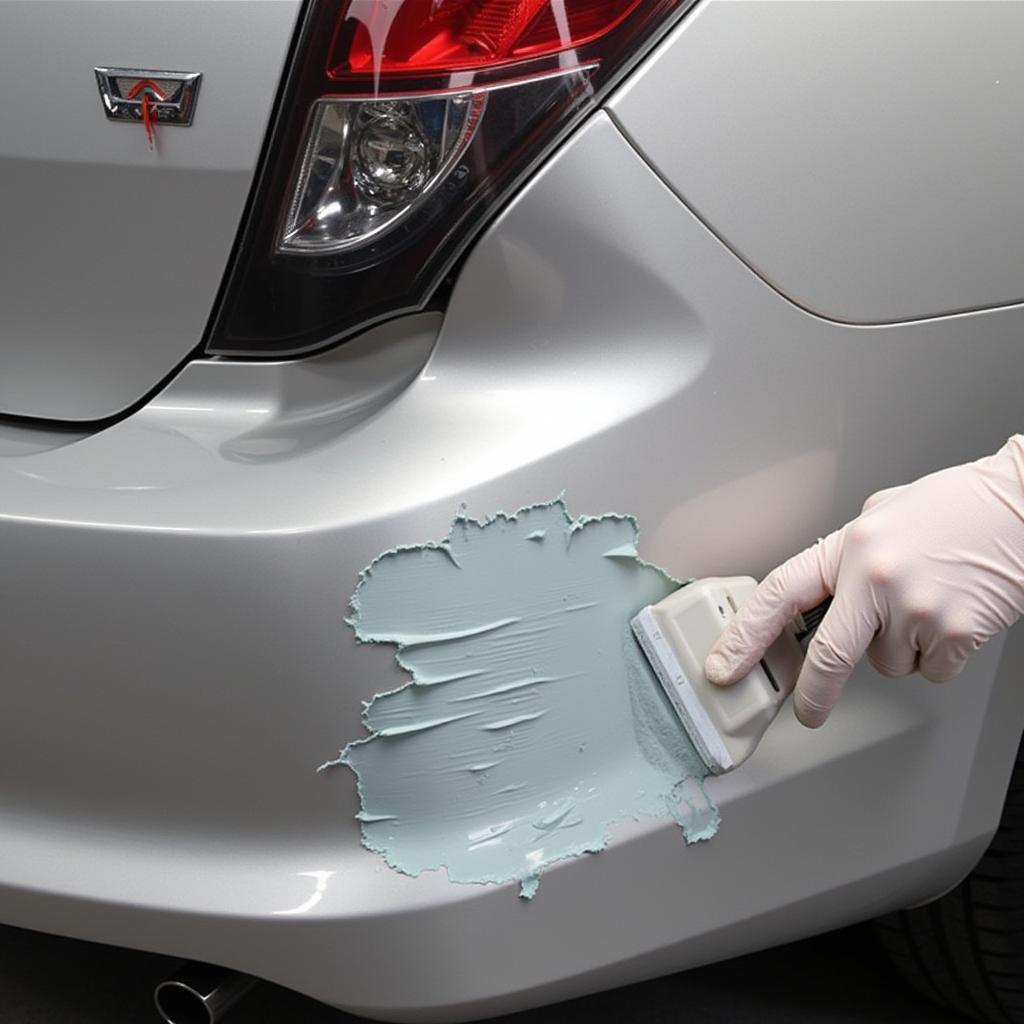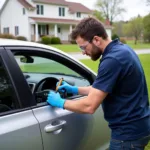Car bodywork repairs with UPOL fibreglass filler are a common and effective method for addressing damage ranging from small dents to larger holes in fiberglass car parts. This guide will provide you with a comprehensive understanding of the process, materials, and techniques required for a successful repair.
Understanding UPOL Fibreglass Filler and Its Applications
UPOL fibreglass filler is a two-part resin and hardener system reinforced with fiberglass strands. This combination provides excellent strength, durability, and adhesion, making it ideal for repairing various fiberglass components such as bumpers, spoilers, body panels, and even boat hulls. Unlike traditional body fillers, UPOL’s fibreglass reinforced filler offers superior structural integrity, bridging gaps and reinforcing weakened areas. This makes it the go-to solution for more substantial repairs where standard filler might crack or fail over time.
Step-by-Step Guide to Using UPOL Fibreglass Filler
Preparing the damaged area is crucial for a long-lasting repair. Start by cleaning the area thoroughly with a degreaser and sanding down the damaged area and surrounding paint to create a rough surface for the filler to adhere to. This ensures proper bonding and prevents future issues like peeling or cracking. For deeper damage, consider beveling the edges of the repair area to create a gradual transition and further enhance adhesion.
Next, mix the UPOL fibreglass filler resin and hardener according to the manufacturer’s instructions. It’s essential to use the correct ratio to ensure proper curing and achieve the desired strength. Once mixed, apply the filler to the prepared area, pressing firmly to ensure good contact and eliminate air pockets. Use a spreader to smooth the filler and build up the repair area to slightly above the surrounding surface, allowing for sanding and shaping later.
After the filler has cured completely, which typically takes around 30 minutes depending on temperature and humidity, begin sanding the repaired area with progressively finer grit sandpaper. Start with a coarser grit to shape the filler and remove excess material, gradually moving to finer grits for a smooth, even finish. This process blends the repair seamlessly with the surrounding surface, preparing it for priming and painting.
Finally, prime and paint the repaired area to match the rest of the car. This not only protects the repair but also restores the vehicle’s appearance.
Common Mistakes to Avoid
- Insufficient Preparation: Failing to properly clean and sand the damaged area can lead to poor adhesion and premature failure of the repair.
- Incorrect Mixing Ratio: Using the wrong resin-to-hardener ratio can affect the curing process and the final strength of the filler.
- Applying Too Much Filler at Once: Applying thick layers can result in uneven curing and potential cracking. It’s best to apply multiple thin layers, allowing each layer to cure before applying the next.
- Insufficient Sanding: Inadequate sanding can leave a rough and uneven surface, making it difficult to achieve a smooth, professional finish.
Why Choose UPOL Fibreglass Filler?
UPOL fibreglass filler offers a number of advantages over traditional body fillers, including superior strength, durability, and adhesion. Its ability to bridge gaps and reinforce weakened areas makes it ideal for repairing structural damage. It’s also relatively easy to use, making it a suitable choice for both DIY enthusiasts and professional car repair technicians.
Conclusion
Car bodywork repairs with UPOL fibreglass filler provide a durable and effective solution for addressing a range of damage to fiberglass car parts. By following the correct procedures and avoiding common mistakes, you can achieve professional-looking results and restore your vehicle’s appearance and structural integrity.
FAQ
- How long does UPOL fibreglass filler take to cure? Typically around 30 minutes.
- Can I use UPOL fibreglass filler on metal? No, it’s specifically designed for fiberglass.
- Do I need to prime before painting over UPOL fibreglass filler? Yes, priming is essential for proper paint adhesion.
- How much filler do I need for a small dent? The amount depends on the size and depth of the dent.
- Can I sand UPOL fibreglass filler after it cures? Yes, sanding is a crucial step for achieving a smooth finish.
- What type of sandpaper should I use? Start with coarser grit and gradually move to finer grits.
- Where can I buy UPOL fibreglass filler? It’s available at most automotive parts stores.
Common Scenarios and Questions:
- Scenario: Crack in a fiberglass bumper. Question: Can UPOL fix this? Yes, it’s ideal for cracks.
- Scenario: Hole in a boat hull. Question: Is this filler suitable? Yes, it’s strong enough for boat repairs.
- Scenario: Small dent in a car door. Question: Is this overkill? It might be, traditional filler might suffice.
Further Resources
For more information on car repair and maintenance, visit our articles on [relevant article link 1] and [relevant article link 2].
Need help? Contact us via WhatsApp: +1(641)206-8880, Email: [email protected]. We have a 24/7 customer support team.


